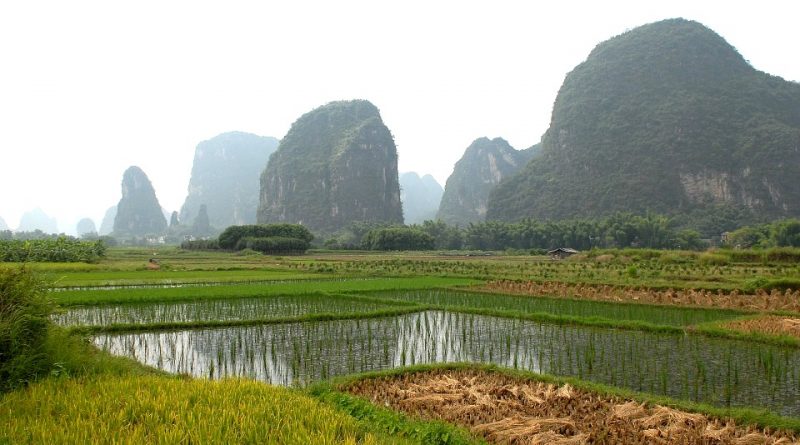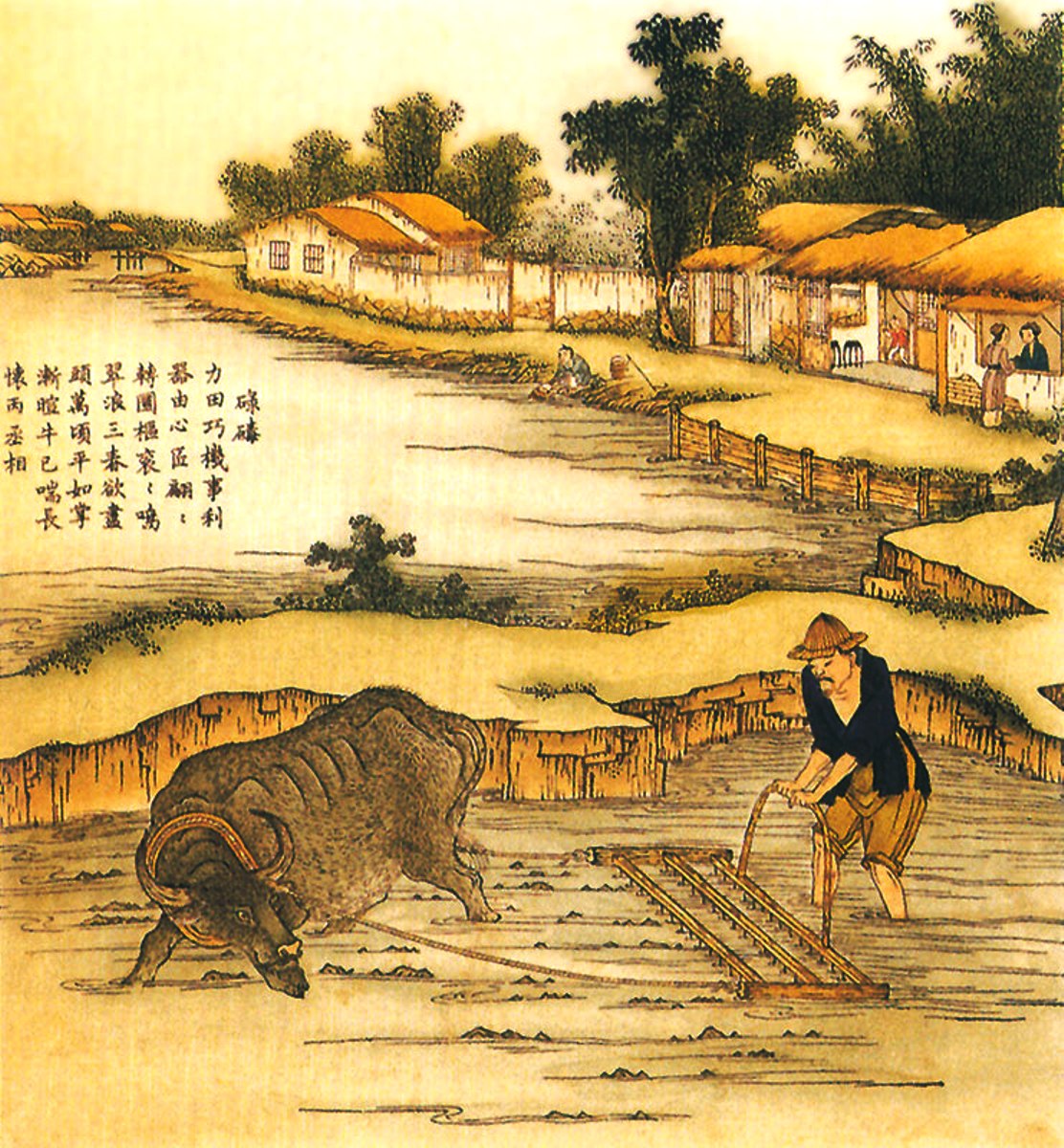Agriculture in ancient China – IV part
Agriculture in ancient China – IV part
Among other agricultural techniques a new method was the “bowl seeding” (ouzhong), which is described in the Book of Fan Shengzhi. This technique consisted in sowing and growing every single plant in a small hole, using a high concentration of fertilizer. The estimated production per unit, according to what is indicated in the text, was incredibly high.
The disadvantage of this technique was the high demand for labor required for plant care; moreover, the division of the land into small plots did not allow the use of animals or machinery, such as the plow.
Thus this method of horticulture was not widely adopted, except to produce profitable crops with high market value.
Another contribution on the knowledge of the techniques of the time comes from the Book of Fan Shengzhi, which also contained some discussions on the organization of the rice fields; this tense gives us interesting news on the cultivation of raw rice, very important at the time, in the South of China.
It turns out, for example, how much attention and which techniques were adopted for the regulation of the level and of the water jet. Seeding in seedbeds (a technique still used today by Chinese farmers), in addition to optimizing the use of land, allowed the young seedling to grow in conditions similar to those guaranteed by the cultivation of holes.
Of course, all of these methods involved a high use of labor. The families, in fact, had to incessantly eradicate the weeds and eliminate the insects from the fields, moving and leveling the ground in the furrows and around the roots, collecting and preparing (usually, through fermentation) different fertilizers, from the vegetable fertilizer to the animal waste. They also had to treat the seeds with a layer of fertilizer before planting them. It can therefore be said that a high use of labor was the most obvious characteristic of agriculture during the Han. Even though the demand for labor was higher during sowing and harvesting, every family of farmers still had to have a team of workers at any time.
This was one of the reasons why all family members participated in the production, while some jobs, such as weeding and insect control, were delegated only to women and children.
Moreover, in a concept of a closed-cycle agricultural system, farmers’ families often raised domestic animals (such as chickens, pigs and dogs) which, in addition to providing organic fertilizer, which is very important in the company’s fertility balance, were the main source of meat for food.
Significant traces of the many non-agricultural activities, but related to them, were also received from the monthly ordinances for the four classes of people; these contain interesting information on the processing of local consumer products (for example, the manufacture of candles, furniture for furnishings, etc.), which had given rise to real rural craft industries.
The landowners in fact, for the benefit of which the monthly Ordinances had been compiled, also took care of – and always for profit – the sale and purchase of grains.
The agriculture of the Han period was closely correlated with market activities and rural craft industries had little chance of competing with a strong urbanized economy. However, the Han government, after a period of tolerance, worried about the influence of wealthy businessmen, began to take repeated measures to contain the activities of the private economic sectors.
Soon the production of salt and iron, a very profitable activity, was placed under the monopoly of the State. The wealthiest people in the provinces were therefore forced to move to the region around the capital to better take care of their business. The final and decisive blow was settled in 117 BC when, following a vast operation aimed at exposing a round of tax frauds, the properties and assets of those who had started commercial and entrepreneurial activities in the city were confiscated, thus leaving new space for rural craft industries.
All this brought some benefit to both farmers and landowners, who thus succeeded in widening the margins of their incomes. In conclusion, to balance an unfavorable man-to-land relationship (due to enormous demographic pressure), the economic organization model could be sustained thanks to a labor-intensive cultivation system.
Ultimately it was thanks to the knowledge and mastery of intensive cultivation techniques that the farmers of the Han period possessed to make possible a rational and continuous exploitation of arable land, necessary to feed the vast population of an area with limited arable spaces.
In this context, the State intervened by promoting both the cultivation of certain crops and the use of certain tools; in addition, at different levels of administration, he supported the implementation of water control projects. In some cases public officials worked to spread the adoption of cultivation techniques already tested in other areas in wider areas. At the same time, the state attempted to limit the originally strong urban economy, thus giving the rural craft industry the opportunity to enter a network of trade that integrated farmers’ income. The development of Han agriculture, in all its complexity, was due to the occurrence of numerous factors, such as demographic pressure, market potential, government interventions, regional production differences, and so on. Agriculture was not at all the result of the conscious effort of a political direction aimed at creating a linear progress; however, we can say that after a four-century development, a rural market economy took shape in China.
Just as in modern agricultural science biological, pedological and ecological knowledge is applied to agricultural processes and used on an experimental basis to improve crop productivity, similarly, in the Chinese context there existed a science of agriculture that applied the cosmological knowledge of forces and natural processes for cultivation; his followers, country gentlemen or illiterate peasants, were striving to harmonize the abstract principles of cosmology with their subtle empirical knowledge of the environment and the techniques they used to increase soil fertility. The agrarian treaties, such as the Essential Techniques for the People (Qimin yaoshu), composed by a man of culture who was also the owner of a farm, reflect the complex intertwining of natural theories and empirical experience, including bookish knowledge and practical knowledge which characterized Chinese agricultural science.
Guido Bissanti


